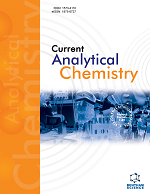
Full text loading...

Artificial intelligence is “a technical and scientific field devoted to the engineered system that generates outputs such as content, forecasts, recommendations or decisions for a given set of human-defined objectives”. Combination of AI and analytical techniques will have huge potential to transform decision-making processes and promote innovation across sectors. AI enhances data detection, segmentation, and image resolution with convolutional neural networks (CNNs) excelling in analyzing complex image datasets for material characterization. Machine learning integrates with different methods like gas chromatography (GC), high-performance liquid chromatography (HPLC), gas chromatography-mass spectrometry (GC-MS), liquid chromatography-mass spectrometry (LC-MS), ultraviolet (UV), and infrared (IR) spectroscopy, mass spectrometry (MS), colorimetry, and biosensing techniques. This review provides an overview of AI-based models and sensors of analytical techniques and highlighting chemometric tools in UV and IR spectroscopy for improved accuracy and data interpretation. Real-time AI analysis of sensor data enables immediately useful conclusions, which is a revolution in a variety of fields, including environmental research and pharmaceuticals. Advanced techniques like spectroscopy, chromatography, and mass spectrometry are given an updated aspect by the use of AI and sensors. This may improve these steps, increasing accuracy and efficiency and enabling quicker and more precise analysis of complex compounds. Multi-dimensional sensor data, which is frequently too complicated for conventional techniques, may be analyzed and processed using AI. This improves the study by enabling further understanding and more thorough analysis. Overall, this paper explores AI-based tools and sensors in analytical techniques and highlights their role in error reduction and process automation.

Article metrics loading...

Full text loading...
References


Data & Media loading...